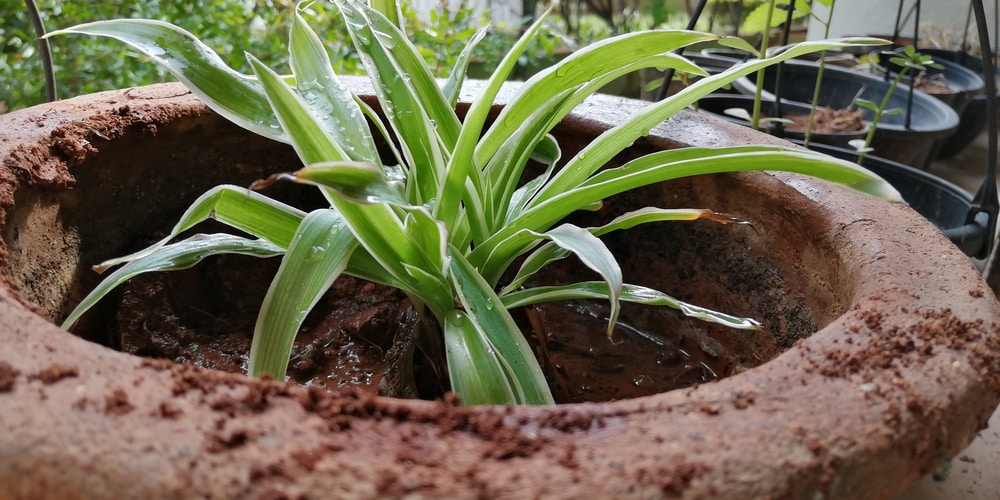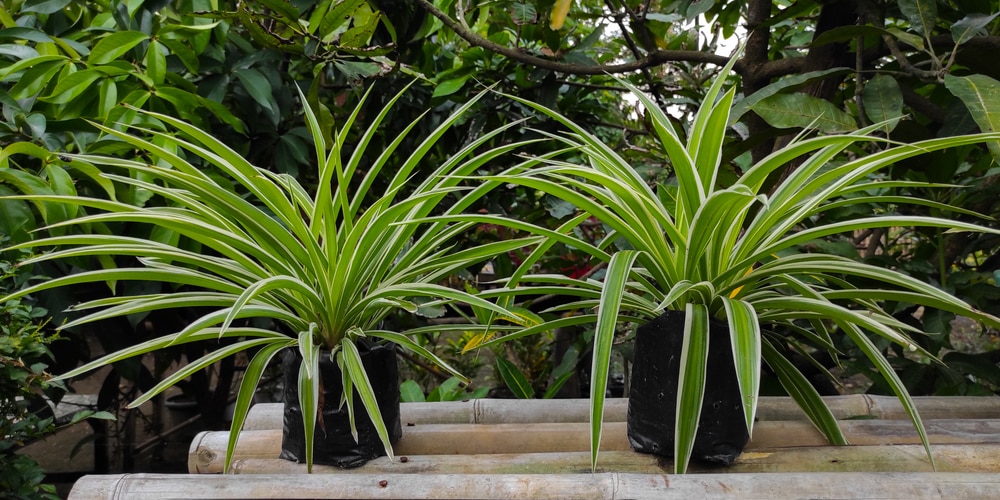Most people that have a spider plant usually keep them indoors. The evergreen perennial is a great houseplant because it’s super easy to care for and adapts well to all kinds of environments, including areas that don’t get much light.
However, it is still possible to keep a Chlorophytum comosum outside in the patio, walkway, or garden as long as you follow certain rules. Here’s how you can grow a spider plant outdoors.
Will Spider Plant Survive Outside?
In order to determine if your spider plant will thrive in your area, you should check and see if it is hardy in your zone. Generally speaking, spider plants can grow in USDA zones 9 to 11, or as an annual in cooler regions. There’s also the matter of portability- you can put your spider plant in a container and bring it indoors during the winter season.
Spider plants are native to South Africa, where the climate is warm. They are not too particular when it comes to the type of soil, humidity, and fertilizer, but the plant’s one weakness is the cold, particularly frost and freezes.
That said, a spider plant should be able to grow outdoors as long as it is not too cold, and that it’s not under direct sunlight for too long. You can find a good position in the patio, yard, or shade and irrigate the soil so it won’t completely dry out. The best time to put out your spider plant is in spring through summer or early fall.
Can Spider Plants Be Put Outside in the Summer?
The Chlorophytum comosum prefers a warm and tropical environment and will quickly succumb to colder temperatures. However, you may be wondering if there is a thing such as ‘too hot’ for the spider plant.
Spider plants are generally forgiving when it comes to light and temperature. However, it won’t be able to tolerate direct sunlight and cold. The perfect temperature range for a spider plant is somewhere between 60 to 90 degrees F.
When the temperature falls to 45 degrees F (or 7 degrees C), or above 90 degrees F (or 32 degrees C), then you should keep your spider plant indoors or put it in a shaded location until it falls into the optimal range.
You can start preparing your spider plant to acclimate outside as soon as the risk of frost has passed. Wait several more weeks, then move your plant to a shaded spot, such as an overhang, a patio, or something similar for 5-7 days.
The spider plant will usually thrive in bright and indirect light, but if you want to give it some sun then you should only time it in the morning.
However, it is worth noting that the sun’s rays can scorch the sensitive leaves and produce brown and crispy edges, especially if you don’t give water on hot days. If you want to be safe in putting your spider plant outside, then the best place would be a shady area.
How to Care for Spider Plant Outdoors
A spider plant situated outdoors may require a bit more attention than a houseplant. There are several factors that can come into play, such as temperature and sunlight.
As a houseplant, chlorophytum comosum can withstand neglect since its soil doesn’t dry out as quickly. Although the best indoor environment for a spider plant is a brightly lit window or glass door, it can tolerate low light now and then at the expense of slowed growth or variegation.
Outdoors, you must treat the spider plant as one that needs regular watering. Wait until the top inch of the soil has dried out before you water your plant again. Water more during hot summer days and when temperatures start to rise.
Spider plants generally do not require fertilization, but you can feed your plant organic fertilizer or a slow-release product during the growing season. A balanced formula at half-dose should be enough for a monthly feeding. Alternatively, you can add slow-release granules in spring to support the spider plant’s growth and only once for that season.
In the same vein, you won’t need to prune spider plants too much except when cleaning up dead, yellow, or brown leaves and to maintain a neat appearance.

